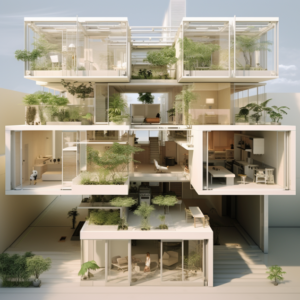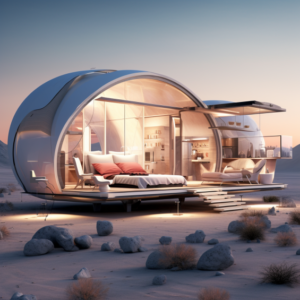The concept of home design has undergone a transformative shift in recent years, with a growing emphasis on flexibility, sustainability, and adaptability. This paradigm shift has given rise to the exploration and integration of portable and movable structures in residential architecture. This article delves into the evolving landscape of home design, examining the various aspects of portable paradigms and their impact on the way we perceive, inhabit, and interact with our living spaces.
1. Introduction:
The traditional notion of a permanent and fixed home has been challenged by a dynamic and fast-paced world. As people’s lifestyles and preferences change, so do their expectations from their living spaces. Portable and movable structures have emerged as innovative solutions that offer not only flexibility in design but also a sustainable approach to housing. This article explores the factors driving the shift towards portable paradigms and the diverse range of structures that embody this contemporary trend.
2. Historical Context:
To understand the current trend of portable structures, it is crucial to explore the historical context that has shaped our perception of homes. From ancient nomadic dwellings to the evolution of fixed architecture, this section provides a comprehensive overview of how human habitation has evolved over time and how portable structures are a return to a more flexible and adaptable way of living.
3. The Rise of Portable Architecture:
This section examines the factors contributing to the rise of portable architecture in the modern era. Economic considerations, environmental concerns, and a desire for mobility are driving forces behind the increasing popularity of movable structures. Case studies of successful portable architecture projects worldwide highlight the diverse applications and benefits of this innovative approach.
4. Design Principles and Challenges:
Portable structures require a unique set of design principles to ensure functionality, aesthetics, and structural integrity. This section explores the design considerations and challenges faced by architects and designers when creating movable homes. From modular designs to collapsible structures, the article examines how these innovations are reshaping the traditional boundaries of home design.
5. Sustainability and Environmental Impact:
One of the key advantages of portable paradigms is their potential to contribute to a more sustainable and eco-friendly living. This section delves into the environmental benefits of portable structures, exploring materials, energy efficiency, and the reduction of the overall carbon footprint. Real-world examples showcase how portable homes can align with the principles of green architecture.
6. Technological Innovations:
Advancements in technology play a pivotal role in the development of portable structures. From smart home integration to 3D printing, this section explores how technology is driving innovation in portable architecture. Case studies highlight the integration of cutting-edge technologies in creating efficient and comfortable living spaces that can be easily transported or adapted to different environments.
7. Cultural Impacts and Social Dynamics:
Portable structures not only impact the physical landscape but also influence cultural perceptions and social dynamics. This section explores how the adoption of portable paradigms affects communities, social interactions, and the concept of homeownership. It examines the potential for creating inclusive and sustainable communities through the integration of movable structures.
8. Economic Considerations:
The economic implications of portable architecture are multifaceted. From cost-effective construction methods to the potential for addressing housing shortages, this section investigates how portable structures can provide practical solutions to economic challenges. Real-world examples and economic analyses demonstrate the viability of portable homes in diverse economic contexts.
9. Case Studies:
This section presents a series of in-depth case studies on notable portable architecture projects from around the world. Each case study highlights the unique features, design philosophies, and societal impacts of these structures, offering readers a closer look at the real-world applications of portable paradigms in home design.
10. Future Trends and Possibilities:
As the field of portable architecture continues to evolve, this section explores the potential future trends and possibilities. From innovations in materials to advancements in automation, the article speculates on the direction that portable paradigms might take and their implications for the future of home design.
11. Conclusion:
In conclusion, Portable Paradigms are challenging the traditional norms of home design by offering flexible, sustainable, and adaptable solutions. The integration of movable structures not only addresses current societal challenges but also opens up new possibilities for creating dynamic, inclusive, and environmentally conscious living spaces. As we continue to embrace the era of portable architecture, it is essential to consider the multifaceted impacts on our communities, economies, and the very essence of what we call “home.”



